Do you actually know what it means to prioritize “happiness” as a key indicator for quality care?
Your mission, should you choose to accept, is to understand, identify, and measure customer happiness.
Kaizo is a performance management technology that supports customer service professionals in the delivery of quality customer support. In designing our solutions we’ve discovered how to make your customers happy, what support agents need, and what business leaders want to see from their teams behind the scenes.
In this article, we take our insider knowledge and do what we do best — create missions to level up your customer happiness.
Key Objective: Optimize your operations to deliver seamless support and cultivate a loyal customer base.
The Challenge: Design a strategy that can turn every customer into a happy customer.
What is a happy customer?
In our recent article, we de-mystified the meaning behind the industry buzzword “customer first.” Now, it’s time to reveal the strategies leading industry executives are taking to increase revenue by focusing on a different topic: customer happiness.
Before we start, let’s take a moment to answer the most important question there is… What is customer happiness?
Customer happiness is the combined experience of long-term satisfaction and customer loyalty one feels after interacting with your product or service. That means that keeping your customers happy is an ongoing process.
So how can you keep customers happy? Like in any good relationship, a customer shouldn’t have to beg to have their expectations met. Or, for that matter, to be treated poorly when something goes wrong.
The customer knows she can turn to your business to get the product she wants most. She will recommend your services to her community and when a problem arises, she will contact your support agents without hesitation or dread. Checking off some boxes there? Congratulations, you’ve just made yourself a happy customer!

But be careful, business owners. Fail to respond to complications in your customers’ journey and you’ll see just how thin the line is between happiness and dissatisfaction.
- 86% of buyers say they would not do business with a company again after just one bad customer service experience.
- 76% of buyers say they would leave a company for a competitor after a bad customer service experience
So, how do you keep customers happy? Show them you care — making your customers happy is a relational process. Care for them and they will care for you. But when that trust is broken too many times, don’t be surprised when you get ghosted.
Are happy customers profitable?
Without a doubt.
- 86% of customers say they are willing to pay more for better customer service.
- 78% of customers would forgive a company for its mistake after receiving excellent service
People make purchasing decisions based on their level of brand loyalty. Customers want to be certain that they’ve made the right purchase from the right company and when they’ve finally found the brand that meets their needs, they don’t want to leave.
This is why we focus so much on the “happy customer” — because they have come to associate your business with quality. They become patient in times of stress, they turn to your services when they need a solution, and they are willing to pay for the quality they’ve come to expect.
In short: happy client — happy life.
Also, a happy customer is your best source of organic marketing! You’d be surprised at how fast an item sells when an influential source recommends your product on social media.
Just ask your sales team! They know how profitable word of mouth can be when the reviews are positive.
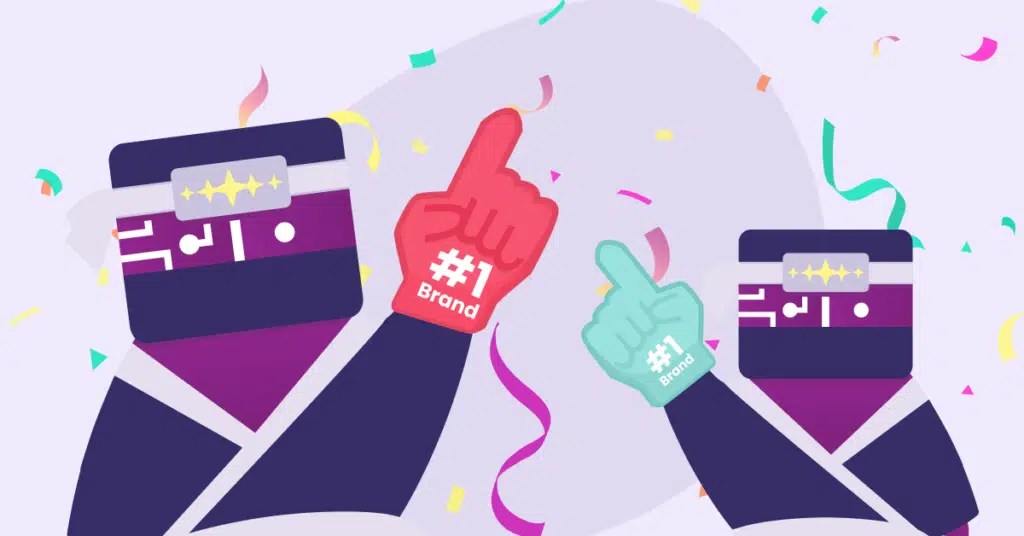
In the entertainment industry, they say “all news is good news” but when a customer is scrolling through a social media feed and all they see is a wall of negative reviews about faulty products and poor customer service – that logic falls apart.
Now, there are always constructive ways to respond to negative customer experiences – you can read more about that in this blog post – but no business wants to spend their time on crisis control, if they can avoid it.
Whether you’re a small business or an international corporation, keeping your customers happy should be a staple KPI.
Read on for some insights on how the customer service industry measures happiness, loyalty, and satisfaction.
The science behind customer happiness
Customer happiness is largely qualitative, meaning the experience is personal, emotional, and ultimately felt on an individual level. Luckily, you don’t have to reinvent the wheel for this one.
Building products and services that delight your customers will draw them in, but the secret to long-term customer happiness will rely on your ability to calculate the right metrics.
So grab your calculators – we’re about to do a bit of math:
Net Promoter Score (NPS)
There is one simple question that you should be asking your customers if you want to understand their level of loyalty to your business.
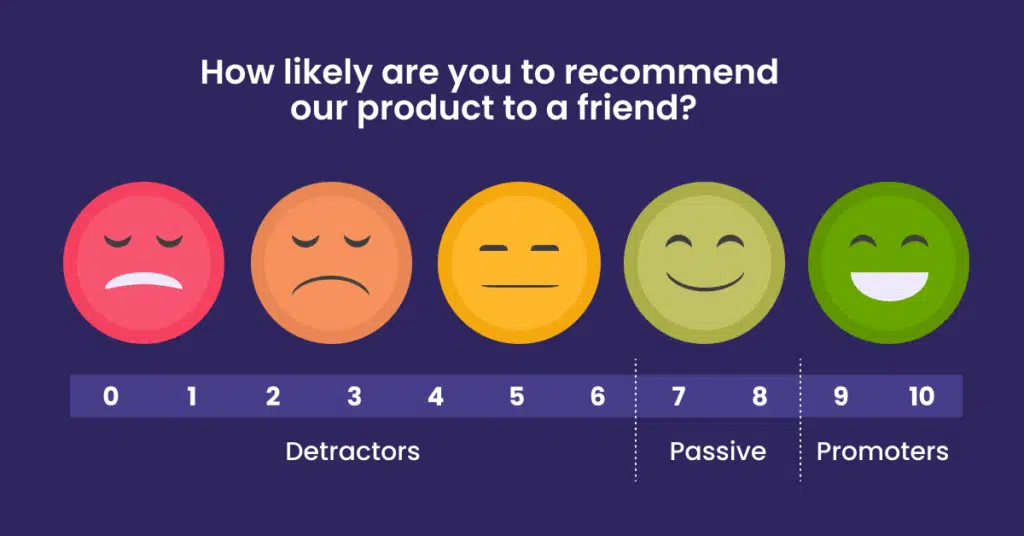
Never underestimate this metric!
This may seem like an old trick but it works. Net Promoter Score (NPS) is measured on a scale from 0 to 10. Ideally, your numbers show that the majority of your buyers are promoters. Of course you’ll have a number of passive buyers, but the customers you want to refrain from making are the detractors.
Detractors are customers who would not recommend your business. Having detractors is a risk because customers with strong emotions feel motivated to share their discontent with others. Thus, detracting the quality of your brand recognition.
Now back to math!
Calculating your business’s NPS is almost as simple as the question it comes with. When you’re doing your monthly reporting, go to your NPS survey data and subtract the percentage of promoters from the percentage of detractors.
NPS = % promoters – % detractors
Your NPS not only gives you insights about the quality of your product but the quality of service your agents provide.
Positive customer experiences have a dramatic impact on NPS. 94% of customers say they would likely recommend a company to others after a positive customer service experience.
Customer Churn Rate (CCR)
Customer churn rate (CCR) calculates the number of customers who stop buying your products or services. CCR also provides insights about customer satisfaction but on a higher level.
This metric is typically used as a percentage that gives the upper management a vision of customer satisfaction and business growth in the long term.

To calculate your customer churn rate, you need clear parameters.
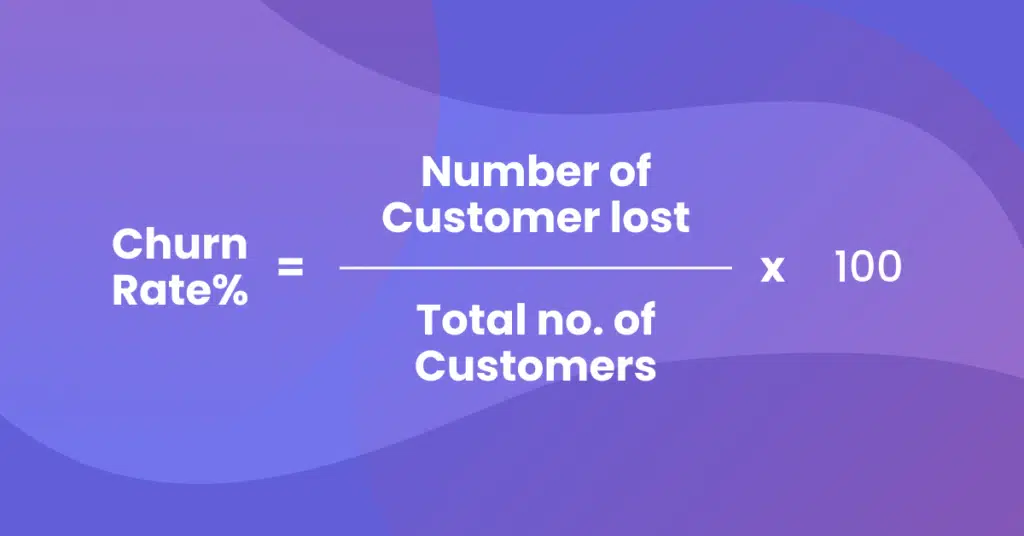
Customer Effort Score (CES)
Similar to NPS, your Customer Effort Score (CES) data comes from a simple, one-question survey.
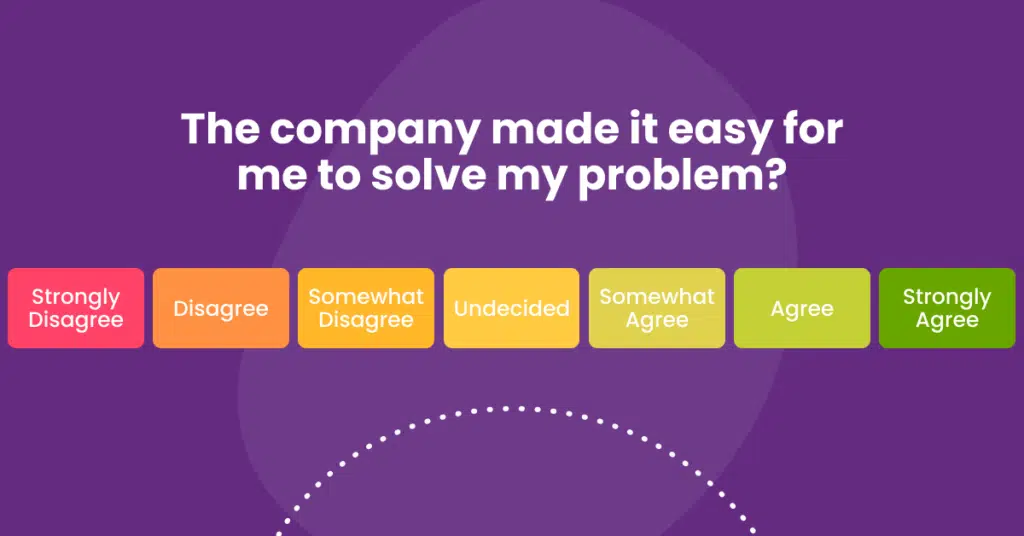
Everyone has seen this image pop up after contacting customer support.
Despite the simplicity of this survey, when we ask a customer to rate their experience, it can communicate a lot about the quality of your customer service design.
- Was your help center easy to find?
- Were your agents knowledgeable about the product the customer purchased?
- Did they empathize with the customer’s complaint and show a commitment to finding a solution to a unique problem?
- Did the customer receive confirmation about their solved ticket?
- Was appropriate compensation provided where no solutions were available?
All of these considerations are, luckily, elements of customer service that can be addressed.
Whether the solution is delivered by improved website design, better training for your support agents, or automated messaging systems – CES is essential for determining a customer’s ease of experience.
Optimized QA Frameworks
Your business’s quality assurance framework should be tailored to your target audience, company values, and the policies you set for interacting with clients.
There can be a vast difference in the way particular markets define quality. For example, if your customers value branded language, training and monitoring the use of particular words may be a metric you include on your QA Scorecard.
Building a QA framework can take some work but the time you spend to ensure your customers stay happy is worth it. If you’re not sure where to start, check out our online resources. We have an e-Book that can provide you with a checklist to get you started.
Dissatisfied customers
Everyone loves when their customers are happy. But, what do you do when your interaction goes wrong?
When agents are faced with an uncomfortable conversation or an aggressive customer, they should be able to look to leadership for guidance.
Having an “angry customer” policy is important because it will provide your agents with a path to de-escalation. And we’ve learned empathy can go a long way here.
Studies show that while 68% of customers expect brands to demonstrate empathy, the reality is that only 37% of customers feel companies demonstrate that level of care.
But how do you monitor empathy in customer service?
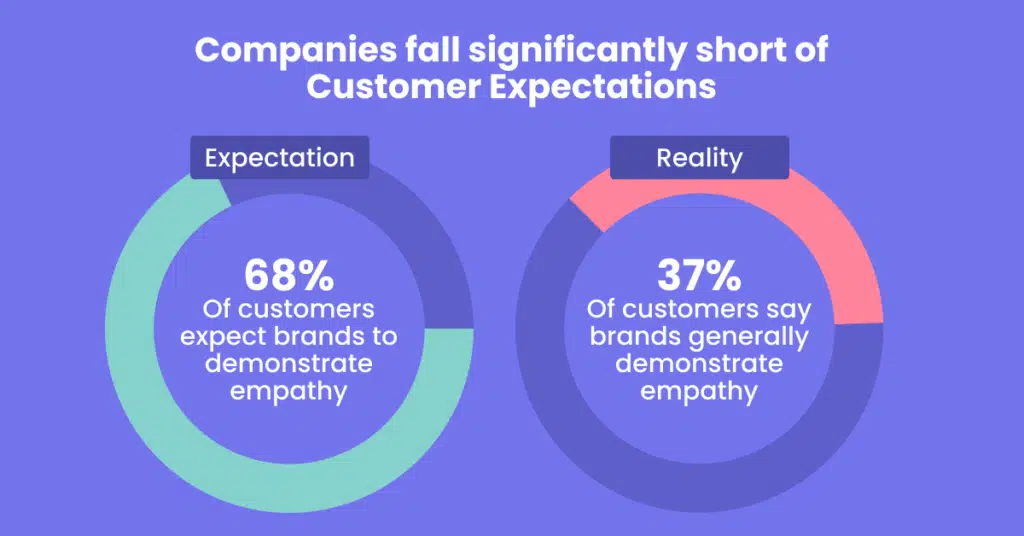
If you’re working with Kaizo by your side, team leads have access to a backlog of tickets. As a team lead, it is your responsibility to evaluate the success of each customer interaction. Here is the perfect opportunity to identify moments of demonstrated empathy. Happy customers feel cared for, their challenges are recognized and, most importantly, their problems are resolved.
Empowering agents to use empathy helps their motivation as well! Working in call centers is difficult work. The effort agents put into solving problems often goes unrecognized and when faced with a negative work environment, it can be hard to remember to “provide service with a smile.”
When managers reward empathetic behavior, it can show agents and customers alike that this is a business with human-centered value. So let’s take that expectation gap and make it our mission to challenge reality!
Who knows — maybe your next assignment will be Operation: Empathy!
Strategic action for customer happiness
Keeping customers happy doesn’t happen without putting in the work.
Complete the following missions and level up your metrics for customer happiness.
Mission One: Get personal
Your marketing and support teams get to collaborate on this one!
Understanding your target audience starts with simple demographic data like gender and age, perhaps even where most sales are made.
Sure, it’s nice to know that your business is popular with 70-year-old men from Chicago, Illinois – but do you know why?
No?
Then it’s time to get obsessive about your customers!
Customers like to know their interests matter. As mentioned earlier, brand loyalty is one of the most important things to customers in this age. It’s important that your business represents larger values that align with their own.
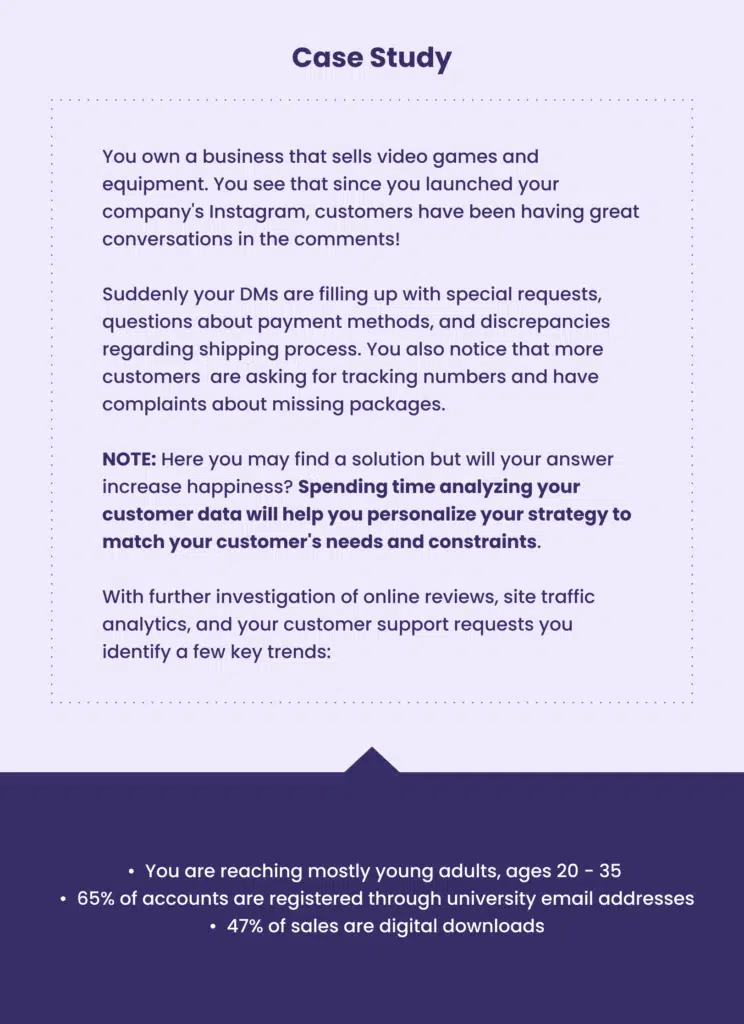
What would you do with this information?
Building a relationship with your customers is about delivering solutions to their needs before they even ask for them.
You know that exam season ends in late May. Why not launch an email campaign promoting your products and summer sales? Now this is where your customer support strategy can also help create the best customer experience possible. Be proactive. With this campaign, you’re calling out to 65% of your target audience.
But here are some things to consider before you jump into it.
- Will the increase in downloads slow down your website?
- How might you manage customer expectations during this time?
- Which support channels are most accessible to university students?
- Are your support agents trained to handle the sudden increase in inquiries?
When you know how to listen to customer feedback, the insights gained can create precision when developing a customer-centered business strategy.
When marketing, customer service, and sales align in the pursuit of customer happiness — not many things can go wrong.
So make sure your teams remember this motto: Happy Customers — Happy Business!
Mission Two: Keep good talent
To complete this mission business leaders need to prioritize the professional development of their agents. With the increase of labor shortages and budget cuts it’s become more important than ever to invest in the talent you have.
In good and bad times, corporate leaders are waking up to the impact of employee experience (EX) on customer happiness.
In 2020, Forbes interviewed 300 senior executives representing companies with a minimum of $20 million in annual revenue. The study found that there is a causal relationship between making customers happy and employee satisfaction.
Forbes found that the executives they surveyed were also designing their strategic goals around keeping quality talent in their support team by investing in professional development and advancing digital care with advanced analytic ecosystems.
We have also noticed these trends. Agent empowerment is central to how we at Kaizo think about developing happy and well-trained customer service professionals. In 2021, we decided to survey agents ourselves to understand their workplace motivation and professional goals.
Here’s one insight we gained from our Customer Service Agent Empowerment Report:
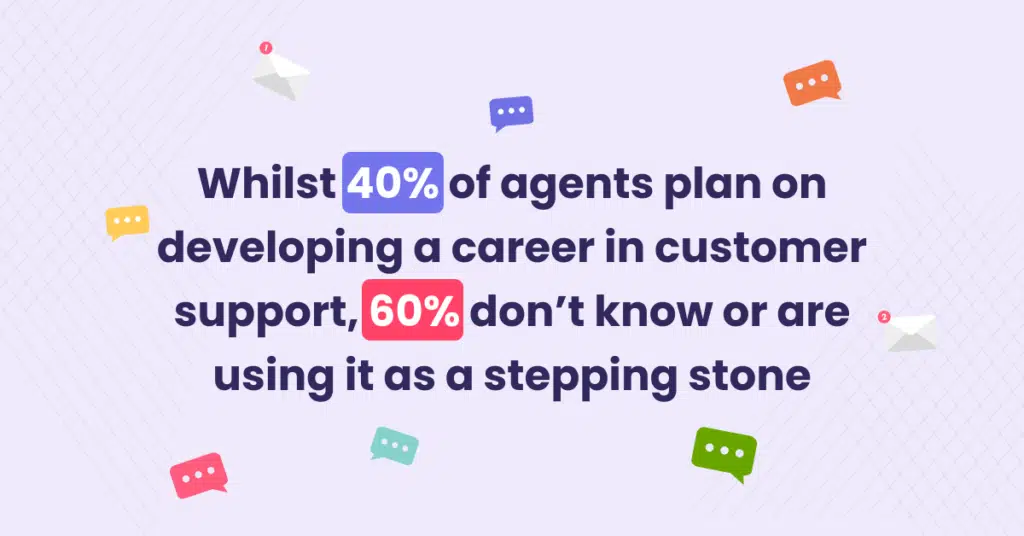
There are people currently working in customer service who want to further their careers. Seeing is believing and when we celebrate success and jump on coachable moments everyone benefits. And that other 60%? They shouldn’t be forgotten. Although this segment of the workforce remains uncertain they are still worth investing in.
Encouraging your team leaders to adopt a coaching mindset can lead to stronger trust in leadership, lower turnover, improved problem solving, teamwork, and satisfaction rates.

When employees see that their leadership is committed to their growth they are more intrinsically motivated to succeed in their roles. Without this personal drive to advance at the workplace performance will suffer. Especially, in times of crisis when customers have shorter fuses, higher expectations, and support heroes are experiencing call center burnout at an alarming rate .
Believe it or not, this goes beyond great customer service.
Customers actually care how employers treat their teams. And this isn’t limited to younger generations. Whether they are Boomers or Genz, people want to see your employees treated with respect. According to Salesforce, it even influences which companies they buy from:
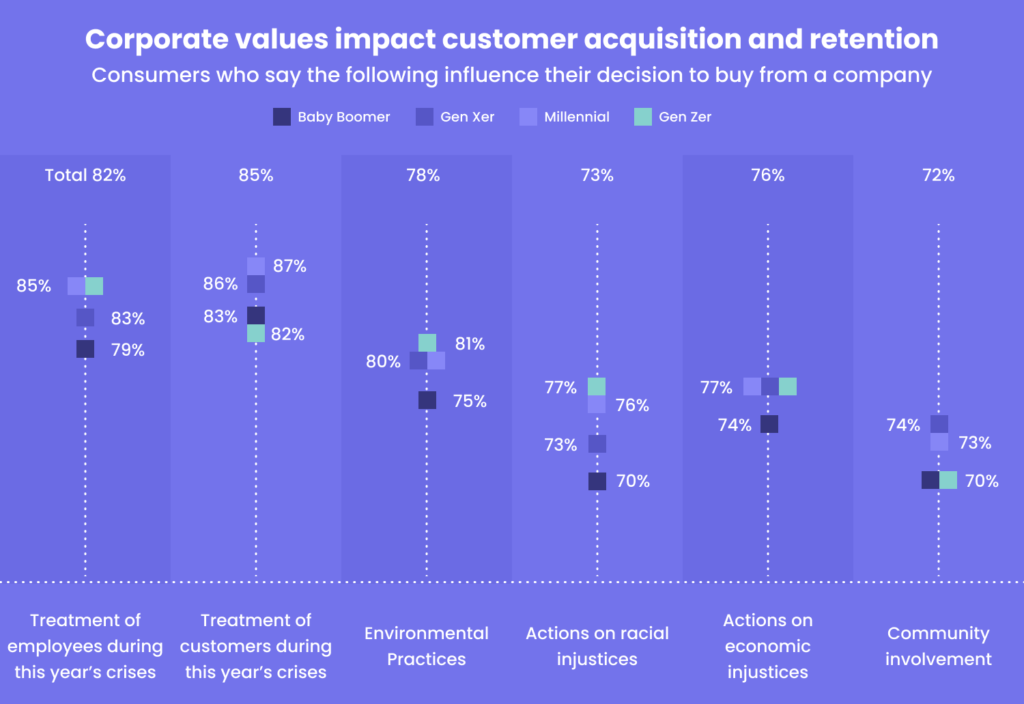
Mission Three: Embrace innovation
Work out self-service strategies and use things like chatbots and easy check-outs for customers to have a seamless experience when interacting with your brand.
Compared to previous years, the approach to these challenges have shifted toward innovative solutions such as deploying AI-assisted performance software, and increasing revenue generation via positive service interaction.

Until recently, the customer service industry has been based on principles of reactive engagement. You have a problem — we solve it. But with robots-in-arms by our side, they handle the simple solutions while your agents handle 1-on-1 inquiries when it matters most.
Need more evidence? We explored this topic on our podcast Support Heroes with Kaitlin Pettersen — Senior Director of Customer Support at Intercom. Listen here!
Mission Four: Anticipate customer needs
Here is where we really get to have fun! Operation Customer Happiness is about to commence and the last step is collecting intelligence.
There are ample opportunities to get information about your customers and competition when you have a team of trained agents to help you!

Businesses conduct customer intelligence to empower their capacity to accurately predict market trends and give your customers the products of their dreams! For all businesses, big or small, this means making the jump from manual data collection to investing in a customer service platform that accelerates your growth.
You’ll want to focus on how customers engage with your company, when they upgrade their packages, and which products have become unprofitable. This data can come from external sources like social media or online reviews.
When you have the right tools, examining your customer data is a no-brainer. However, internal customer service metrics may tell you more.
- How would you categorize the most frequent complaints that your call center agents receive?
- What shipping processes can be optimized?
- Does your website provide clear information to your customers or are they left confused and turning to your support agents for advice?
While the common sense solution would be to look to the marketing or product teams to predict customer needs, your customer support agents and the tech they use can be your secret to success.
Wrapping it up
Business leaders, the time is now. Operation: Customer Happiness is a go.
Good luck and remember – your agents are your most precious resource. Invest in your employees and customer happiness is sure to follow.
Don’t you have what you need to achieve your mission? See if Kaizo can help you on your way to success!


